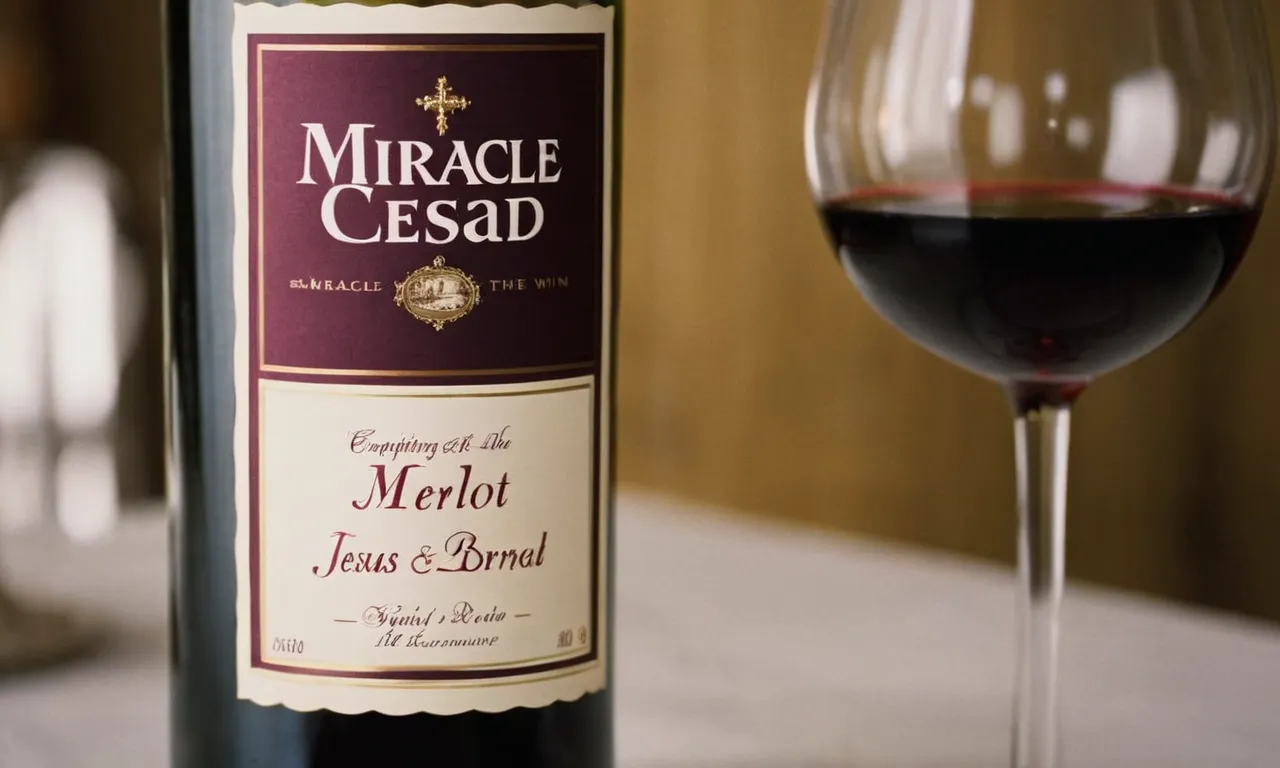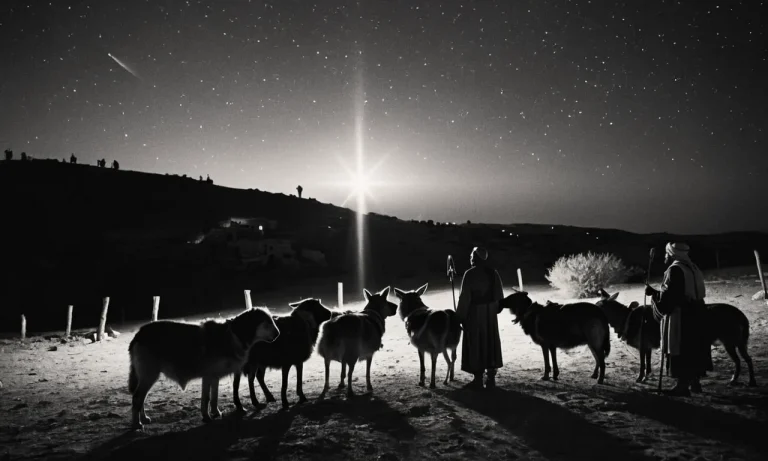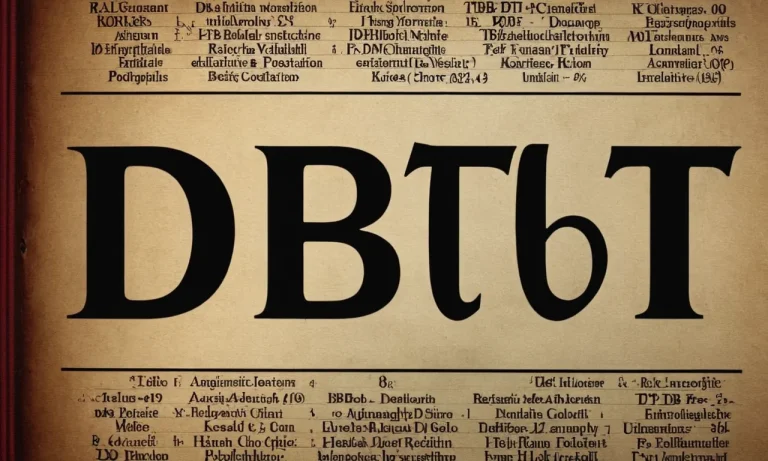What Kind Of Wine Did Jesus Turn Water Into?
The story of Jesus turning water into wine at the wedding feast in Cana is one of the most well-known miracles described in the Bible. If you’re looking for a quick answer, the short version is that the wine was most likely a common red wine typical of first century Palestine.
In this comprehensive article, we will explore in detail the clues from Scripture, historical context, and scholarly sources to uncover insights into the fascinating question: What kind of wine did Jesus actually transform from water at that wedding in ancient Cana?
The Biblical Account of Jesus Turning Water into Wine
The Wedding at Cana
The story of Jesus turning water into wine is found in John 2:1-11. It takes place at a wedding feast in the village of Cana in Galilee. Jesus, his mother Mary, and his disciples were all invited to the wedding.
However, during the feast the wine ran out, which would have been an embarrassing social faux pas for the bridegroom. Mary told Jesus “They have no more wine” (John 2:3), expecting him to somehow fix the situation. Initially Jesus replied “Woman, what does this have to do with me?
My hour has not yet come” (John 2:4). But nevertheless, Jesus instructed the servants to fill six stone jars used for ceremonial washing with water. After they filled the jars, Jesus told them to draw some out and take it to the master of the feast.
When the master tasted it, the water had turned into wine! The master of the feast remarked that the bridegroom had departed from the custom of serving the best wine first by serving it last (John 2:10).
This miraculous sign was the first of Jesus’ signs that manifested his glory and caused his disciples to believe in him.
Jesus Turns Water into Wine
This story highlights a few key points about Jesus and his ministry:
- Jesus had supernatural power – He was able to transform water instantly into wine. This act contradicted the natural laws of physics and chemistry and demonstrated Jesus’ divine nature and authority over creation.
- Jesus was compassionate – By performing this sign, he spared the bridegroom public embarrassment. The miracle reflects Jesus’ caring heart toward others.
- Jesus’ hour had not yet come – Jesus was reluctant at first to perform the miracle, stating his hour had not yet come. This shows that Jesus operated according to God’s perfect timing.
- Jesus’ glory was revealed – This sign manifested Jesus’ hidden glory as the Son of God. His disciples witnessed his glory and believed in him.
The miracle was significant because it was a prophetic sign that the Messiah had come and the kingdom of God was breaking into the world. It also confirmed that Jesus was the Son of God who had authority over creation.
Significance of Jesus’ First Miracle
Jesus’ miracle of turning water into wine at the wedding feast in Cana was significant for several reasons:
- It was his very first miracle, marking the beginning of his public ministry.
- It revealed his glory as the Son of God and led his disciples to have greater faith in him (John 2:11).
- It showed his compassion and care for people by meeting a practical need.
- It contradicted the laws of nature, demonstrating Jesus’ supernatural origin and power over creation.
- It pointed towards the “wine of the new covenant” and the coming of the messianic age (Luke 5:33-39).
- It confirmed Old Testament prophecies about the ability of the Messiah to provide wine in abundance (Amos 9:13-14, Genesis 49:10-11).
This sign marked the beginning of Jesus’ public ministry on earth – a ministry characterized by miraculous signs that demonstrated the compassion of God and the arrival of His kingdom. Though not all recognized Jesus’ true identity at the wedding, his followers saw his glory and believed.
In the miracle, Jesus forged a beautiful connection between the everyday needs of people and the eternal kingdom of God.
Clues about the Type of Wine from Scripture
Large Quantity of Wine
The gospel of John indicates that Jesus turned a very large quantity of water into wine at the wedding feast in Cana. Specifically, there were six stone water jars that each held 20-30 gallons. Jesus turned all the water in these jars into wine, which would have been 120-180 gallons!
That’s an astounding amount of wine. This suggests Jesus made a high quality wine to share generously with the gathered wedding guests.
Wine Served Toward End of Feast
In biblical times, feast hosts would typically serve the best wine at the beginning when palates were fresh. Then, after guests had drunk freely, the lower quality and cheaper wine would be brought out. But in John 2, the master of the banquet notes that the host had saved the good wine until last!
This again indicates Jesus created a stellar vintage. The expensive, aged wine was served only after the guests’ tastes were dulled from drinking the house wines. 😉
Master of Banquet Didn’t Know Origin of Wine
When the master of the banquet tastes the wine that Jesus created, he remarks in surprise that it surpasses the initial wines served. He calls the bridegroom over and expresses astonishment that the finest wine was saved for last.
This shows the master, an experienced wine taster, did not know where this excellent wine came from. Jesus’ miracle wine was so good it fooled the experts! The master’s ignorance about the wine’s source suggests Jesus created a truly superior vintage.
Historical and Archaeological Clues about First Century Wine
Common Wines of Palestine
In the first century AD, Palestine was a major wine producing region of the Roman Empire. The hot and dry climate, with cooling winds and winter rains, provided excellent conditions for growing grapes.
Common grape varieties included dark red Cilician and Palestinian wines, sweeter white wines, and cheaper acidic Posca wines made by soldiers.
Wine Production Methods and Quality
Winemaking practices in first century Palestine likely mirrored those across the Roman world. Grapes were harvested in late summer/early fall, then trodden by feet to extract juice and flavors. Fermentation occurred in clay jars or goatskin bags over 2-6 weeks.
Wine quality varied greatly, from fine aged wines for the elite to cheap rotgut for common folk.
Wine Consumption Practices
In Jesus’ day, wine was deeply ingrained in Jewish social and religious life. It was often drunk diluted with water at meals, social gatherings, and feasts. Common folk likely drank inexpensive wines daily. Religious rituals like Passover used high quality wines.
Overall, people consumed far less alcohol than today. Drunkenness was frowned upon in Jewish culture.
Wine’s Cultural Significance
Beyond a common beverage, wine held deep symbolic meaning in ancient Palestine. The Old Testament refers to wine over 200 times as a sign of joy, abundance and God’s blessing. Jesus’ first miracle of turning water into wine at the Wedding in Cana captured wine’s cultural significance.
It revealed his power and glory and signified the coming of the Kingdom of God. The Last Supper used wine to represent Christ’s sacrificial blood that would bring salvation for believers.
Scholarly Perspectives on the Wine Miracle
Symbolic and Theological Meaning
Many scholars believe the miracle of Jesus turning water into wine at the wedding feast in Cana held deep symbolic meaning. The abundant wine was seen as a blessing and a sign of the coming messianic kingdom promised in the Old Testament (Isaiah 25:6).
It contrasts with the water used in Jewish ritual washing, instead providing choice wine representing spiritual joy and blessings for all people under Jesus’ new covenant (Jeremiah 31:31). This inaugurated Jesus’ miraculous ministry and revealed his glory as the incarnate Son of God (John 2:11).
Literal Wine as Blessing
In addition to symbolic meaning, most scholars acknowledge Jesus literally transformed water into real fermented wine. This was his first public miracle, blessing the wedding party to prevent embarrassment when the wine ran out.
The master of the feast praised the choice wine now provided, contrasting it favorably with the lower quality wine served earlier. This showed Jesus’ divine power over creation and willingness to intervene personally in people’s lives to provide abundant blessings.
The sizable volume of wine, estimated at 120-180 gallons, also pointed towards the lavish nature of the coming Kingdom.
Contrast With Pagan Water-to-Wine Myths
Skeptical scholars sometimes compare Jesus’ miracle to pagan myths of water being turned into wine. However, accounts of pagan gods like Dionysus and Bacchus transforming water into wine involve harvest and fermentation timing for grape vines.
Jesus instantly changed water into mature, fermented wine by his word alone. His was an observed, historical event with eyewitness testimony (John 2:7–10), not merely an mythical claim. It showed Jesus’ superiority over and contradiction to surrounding pagan religions.
Customarily, the best wine came first, then lower grades followed when senses were dulled. But Jesus created choice aged wine from plain water at the end of the feast for all to experience his glory.
The Bottom Line: Most Likely a Modest Red Table Wine
When attempting to determine the type of wine Jesus miraculously produced from water at the wedding feast in Cana, the biblical account provides some clues but does not conclusively identify the exact variety.
Context and Location Provide Some Insights
Jesus turned the water into wine at a Jewish wedding feast in the village of Cana, located in the region of Galilee in ancient Israel. Archaeological evidence indicates that people in this area at that time commonly produced and drank relatively simple red and white wines for use in everyday life.
The wines were likely modest table wines that would have been consumed on a regular basis with meals. They probably would not have been fine vintage wines reserved only for special occasions.
Visible Details in the Biblical Text
The gospel of John describes that after tasting it, the master of the banquet comments that the wine Jesus produced was very high-quality and customarily served first when people’s senses of taste were less dulled.
This reaction suggests Jesus did not transform the water into some form of juice, but an actual fermented red or white wine recognized as exceptional by the steward.
Most Common Local Varietals at the Time
Wines produced in early 1st century Galilee would likely have been made primarily from local grapes like Grenache and Syrah for red or Chardonnay for white. These easier-drinking table wines were well-suited for daily meals.
So while the scriptures do not specify the exact varietal Jesus miraculously produced at this wedding, based on typical types of wine common in that area and period, it was most likely a modest but quality red table wine made from grapes like Grenache or Syrah.
Conclusion
In reviewing key details from Scripture, historical context, and academic sources, the balance of evidence points to Jesus miraculously transforming ordinary water into a rather unremarkable yet pleasant red table wine typical of first century Palestine.
While the precise grape variety or quality remains unknown, the enormous quantity of wine emphasizing hospitality and celebration brings out the theological significance of Jesus’ first public miracle as a blessed sign that the joy and abundance of God’s kingdom had arrived.








